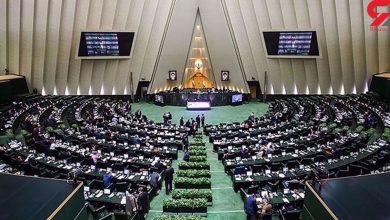Iran successfully launches its inaugural space tug, setting a new benchmark for payload capacities lifted into orbit
In a significant advancement for Iran's space industry, an indigenously designed and produced space tug has been successfully launched into orbit using a domestically developed satellite launch vehicle (SLV).

On Friday morning, the Saman-1 satellite, in conjunction with a CubeSat and a research payload, was successfully launched into space from the Imam Khomeini Space Launch Terminal located southeast of Semnan. The deployment utilized a Simorgh rocket to carry the payloads into orbit.
The payloads have been successfully deployed into Earth’s orbit, achieving an apogee of 410 kilometers and a perigee of 300 kilometers.
The Iranian Ministry of Defense has developed the Simorgh, a two-stage space launch vehicle (SLV) powered by liquid fuel.
In its eighth mission, the Simorgh rocket achieved a landmark milestone by setting a new record in payload deployment. The multi-phase launch successfully delivered the Saman-1 orbital transfer module, along with two additional research payloads, to their designated orbit, collectively weighing almost 300 kilograms.
Technicians at the Iranian Space Research Center (ISRC) have successfully engineered the Saman-1 system, a pioneering technology aimed at positioning satellites into higher orbits. This breakthrough is poised to significantly cut costs and obviate the requirement for larger launch vehicles, which are typically characterized by their high fuel consumption.
In October 2022, Iran successfully conducted a test launch of its indigenous space tug, a pivotal development in the nation’s aerospace capabilities. Hassan Salaryieh, head of Iran’s space agency, commented on the system, noting that it represents a significant advancement in achieving orbital synchronization with Earth. This development allows for a more efficient transition of satellites from geostationary to operational orbits, enhancing Iran’s satellite deployment capabilities.
**Fakhr-1 Nano-Satellite**
According to reports from Iranian media, today’s launch successfully deployed the Fakhr-1 communication satellite. This satellite, engineered by specialists from the Ministry of Defense’s Iran Electronics Industries, was inserted into an orbit at an altitude of 410 kilometers.
The nano-satellite, bearing the name of the late Dr. Mohsen Fakhrizadeh, who was martyred, features a 3U configuration and has a mass of under 10 kilograms.
According to reports by Tasnim News Agency, a key objective of this space mission was to evaluate the Simorgh launcher’s ability to deploy multiple payloads efficiently.
The Fakhr-1 satellite incorporates crucial subsystems such as a main computer, power and energy management units, radio communication systems, and flight dynamics technologies. Remarkably, the majority of these components have been developed locally by domestic knowledge-driven enterprises, marking their inaugural deployment into space.
Following its detachment from the launch vehicle, the satellite successfully relayed telemetry data, encompassing information from its various subsystems and sensors. During its initial orbit, the satellite accurately received and carried out commands issued by ground stations.
Despite the imposition of Western sanctions in recent years, Iran has made significant advancements in its civilian space program.
The nation ranks among the top ten countries globally in terms of its ability to develop and launch satellites.
On September 14, Iran achieved a significant milestone in its space program by successfully launching the Chamran 1 research satellite, an indigenously developed project, into orbit.




